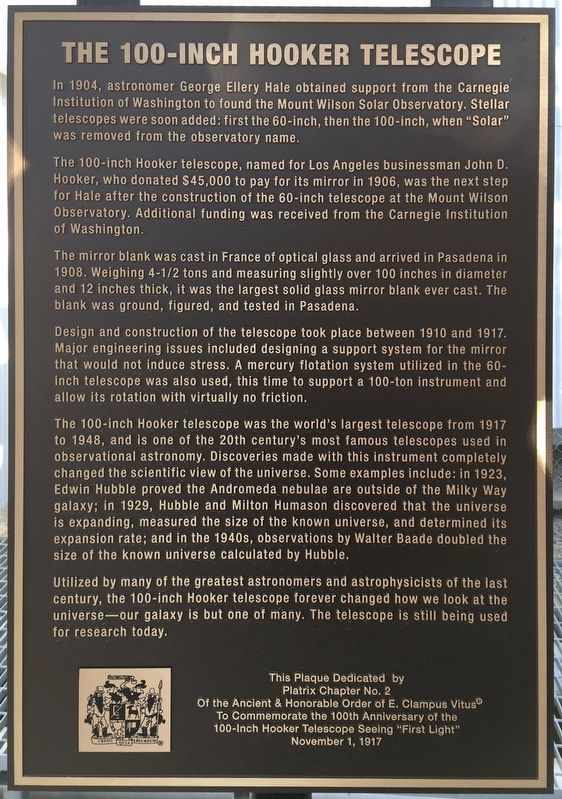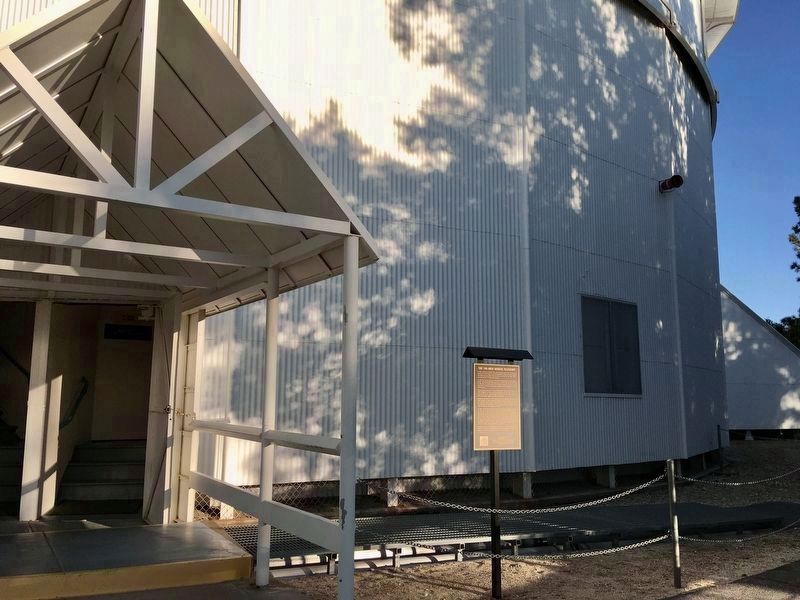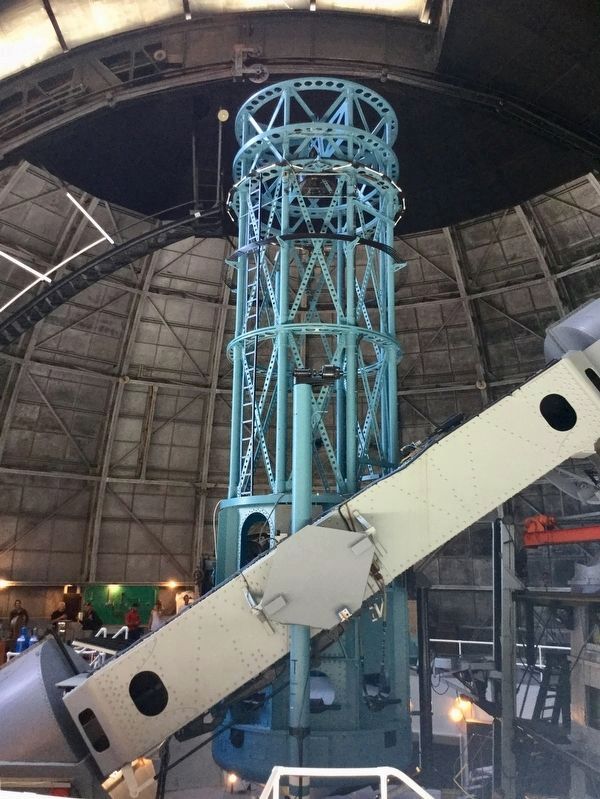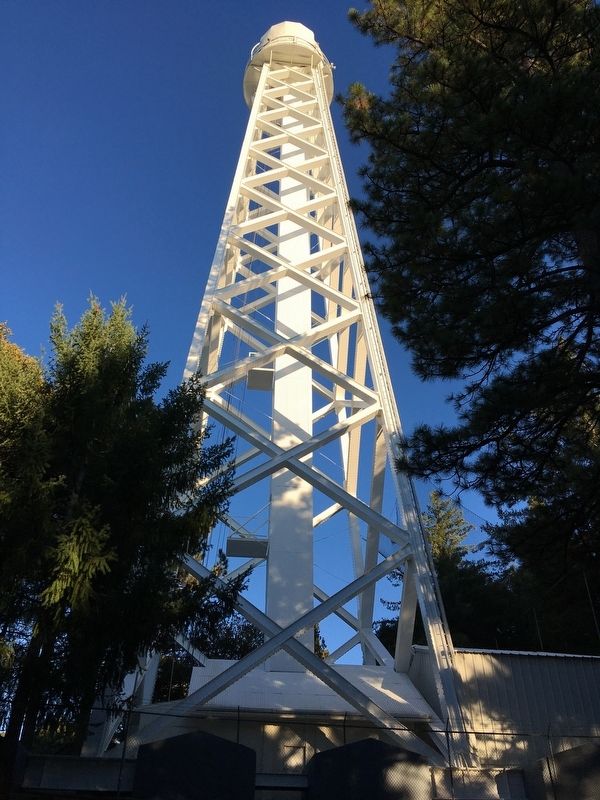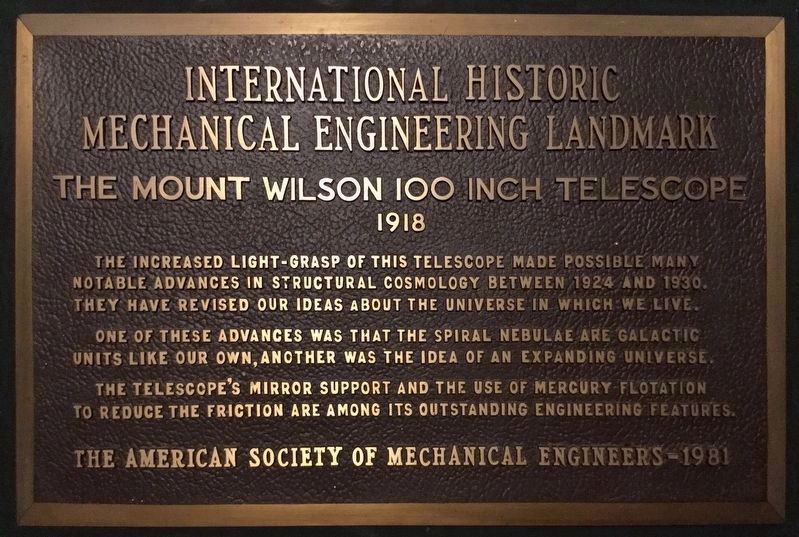Angeles National Forest in Los Angeles County, California — The American West (Pacific Coastal)
The 100-Inch Hooker Telescope
Mount Wilson Observatory
In 1904, astronomer George Ellery Hale obtained support from the Carnegie Institution of Washington to found the Mount Wilson Solar Observatory. Stellar telescopes were soon added: first the 60-inch, then the 100-inch, when "Solar" was removed from the observatory name.
The 100-inch Hooker telescope, named for Los Angeles businessman John D. Hooker, who donated $45,000 to pay for its mirror in 1906, was the next step for Hale after the construction of the 60-inch telescope at the Mount Wilson Observatory. Additional funding was received from the Carnegie Institution of Washington.
The mirror blank was cast in France of optical glass and arrived in Pasadena in 1908. Weighing 4½ tons and measuring slightly over 100 inches in diameter and 12 inches thick, it was the largest solid glass mirror blank ever cast. The blank was ground, figured, and tested in Pasadena.
Design and construction of the telescope took place between 1910 and 1917. Major engineering issues included designing a support system for the mirror that would not induce stress. A mercury flotation system utilized in the 60-inch telescope was also used, this time to support a 100-ton instrument and allow its rotation with virtually no friction.
The 100-inch Hooker telescope was the world's largest telescope from 1917 to 1948, and is one of the 20th century's most famous telescopes used in observational astronomy. Discoveries made with this instrument completely changed the scientific view of the universe. Some examples include: in 1923, Edwin Hubble proved the Andromeda nebulae are outside of the Milky Way galaxy; in 1929, Hubble and Milton Humason discovered that the universe is expanding, measured the size of the known universe, and determined its expansion rate; and in the 1940s, observations by Walter Baade doubled the size of the known universe calculated by Hubble.
Utilized by many of the greatest astronomers and astrophysicists of the last century, the 100-inch Hooker telescope forever changed how we look at the universe — our galaxy is but one of many. The telescope is still being used for research today.
This Plaque Dedicated by Platrix Chapter No. 2 of the Ancient & Honorable Order of E. Clampus Vitus, to Commemorate the 100th Anniversary of the 100-Inch Hooker Telescope seeing "First Light" November 1, 1917.
Erected 2017 by E. Clampus Vitus.
Topics and series. This historical marker is listed in these topic lists: Man-Made Features • Science & Medicine. In addition, it is included in the E Clampus Vitus series list. A significant historical year for this entry is 1917.
Location. 34°
13.552′ N, 118° 3.442′ W. Marker is in Angeles National Forest, California, in Los Angeles County. Marker can be reached from Mt Wilson Red Box Road, 4.7 miles south of Angeles Crest Highway (California Route 2). Touch for map. Marker is in this post office area: Pasadena CA 91107, United States of America. Touch for directions.
Other nearby markers. At least 8 other markers are within 4 miles of this marker, measured as the crow flies. The Mount Wilson 100 Inch Telescope (a few steps from this marker); Michelson Pier on Mount Wilson (approx. ¼ mile away); Harvard’s Mount Wilson Station (approx. 0.3 miles away); Benjamin Davis Wilson (approx. 0.4 miles away); Adams Pack Station (approx. 2.9 miles away); Mount Lowe Railway (approx. 3.8 miles away); World’s Largest Blossoming Plant (approx. 3.8 miles away); Mount Wilson Trail (approx. 3.9 miles away). Touch for a list and map of all markers in Angeles National Forest.
More about this marker. The grounds of the Mount Wilson Observatory are open daily from 10 to 5, April 1 to November 30. The Viewing Gallery at the 100-Inch Telescope is a half-mile walk from the parking lot, at an elevation of 5,700 feet. There is also a museum located along the paved path. All are free. Guided tours are available for a fee, and occasional public viewing events allow visitors to look through the historic 100-Inch Telescope, “The Most Important Scientific Instrument of the Twentieth Century.”
Also see . . .
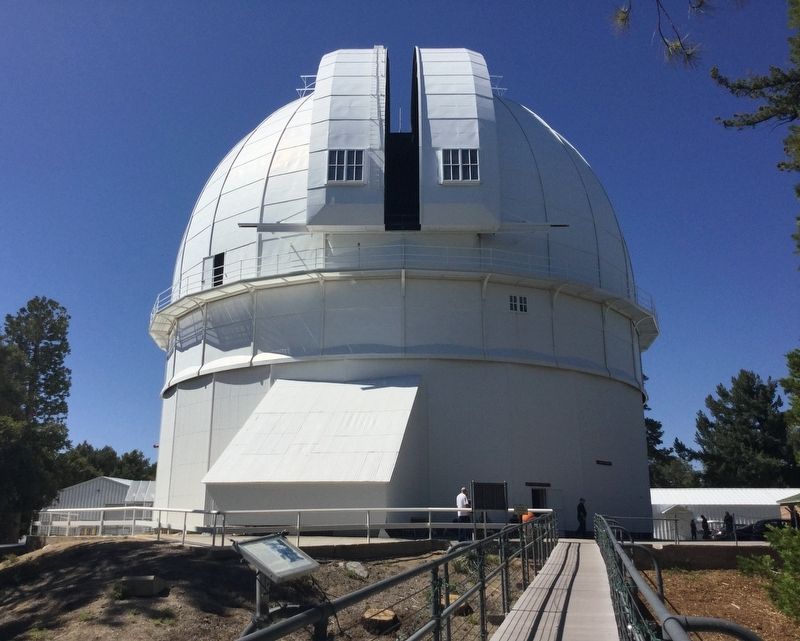
Photographed By Craig Baker (CC0), June 30, 2018
3. 100-Inch Telescope
The Visitor Gallery entrance is to the left, at the west side of the dome.
Credits. This page was last revised on June 3, 2023. It was originally submitted on November 25, 2019, by Craig Baker of Sylmar, California. This page has been viewed 1,042 times since then and 93 times this year. Last updated on December 7, 2019, by Craig Baker of Sylmar, California. Photos: 1, 2, 3, 4, 5, 6. submitted on November 25, 2019, by Craig Baker of Sylmar, California. • J. Makali Bruton was the editor who published this page.
